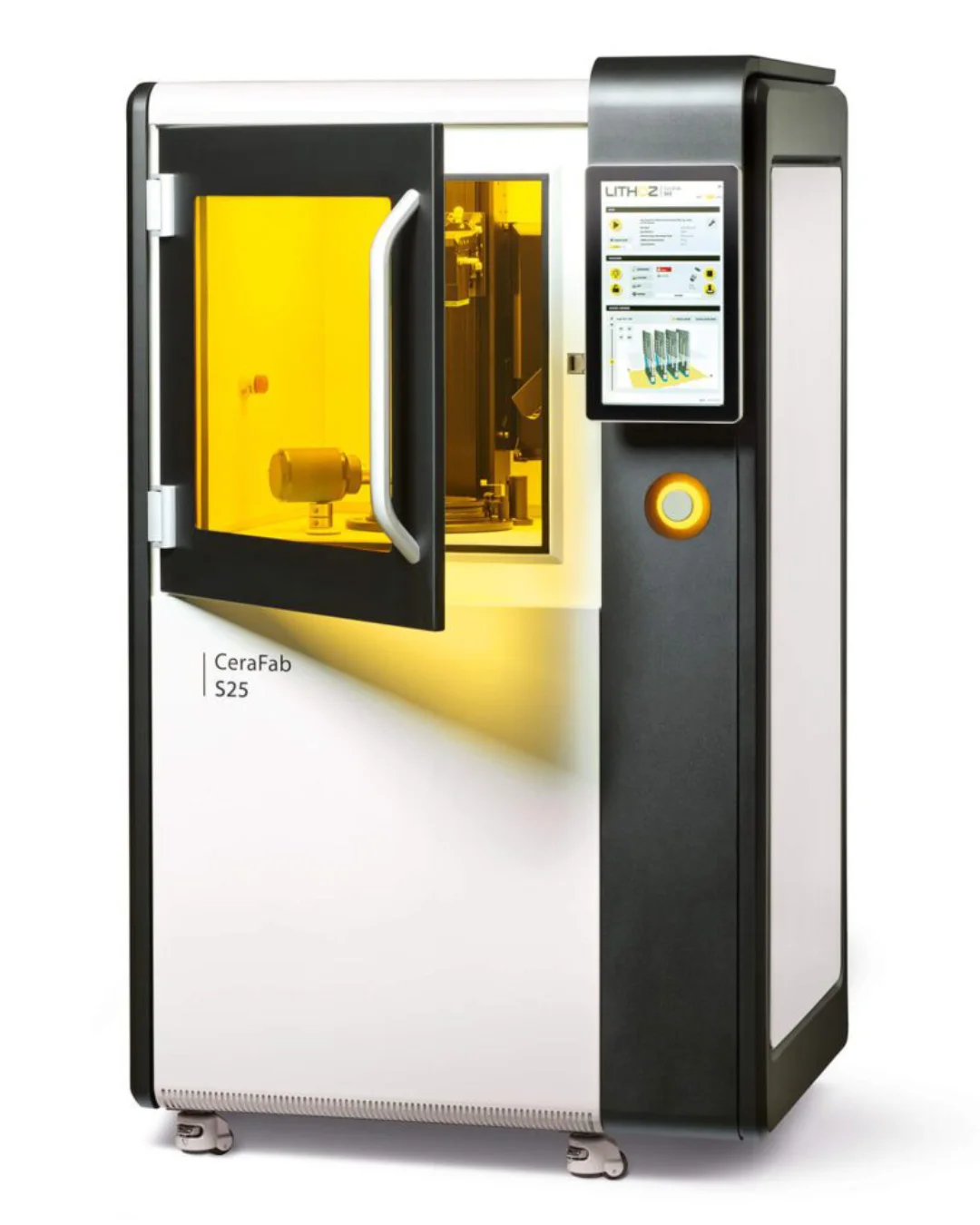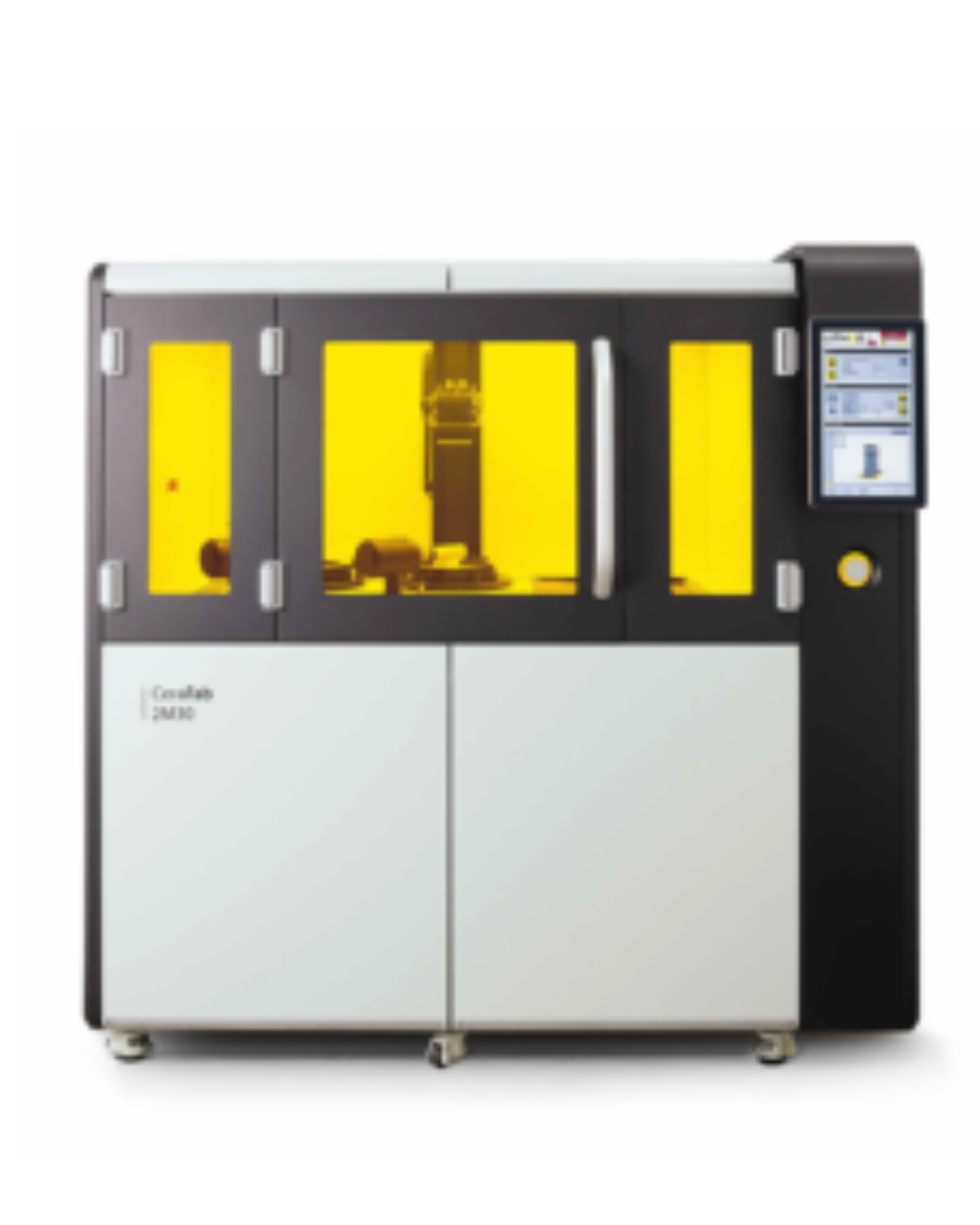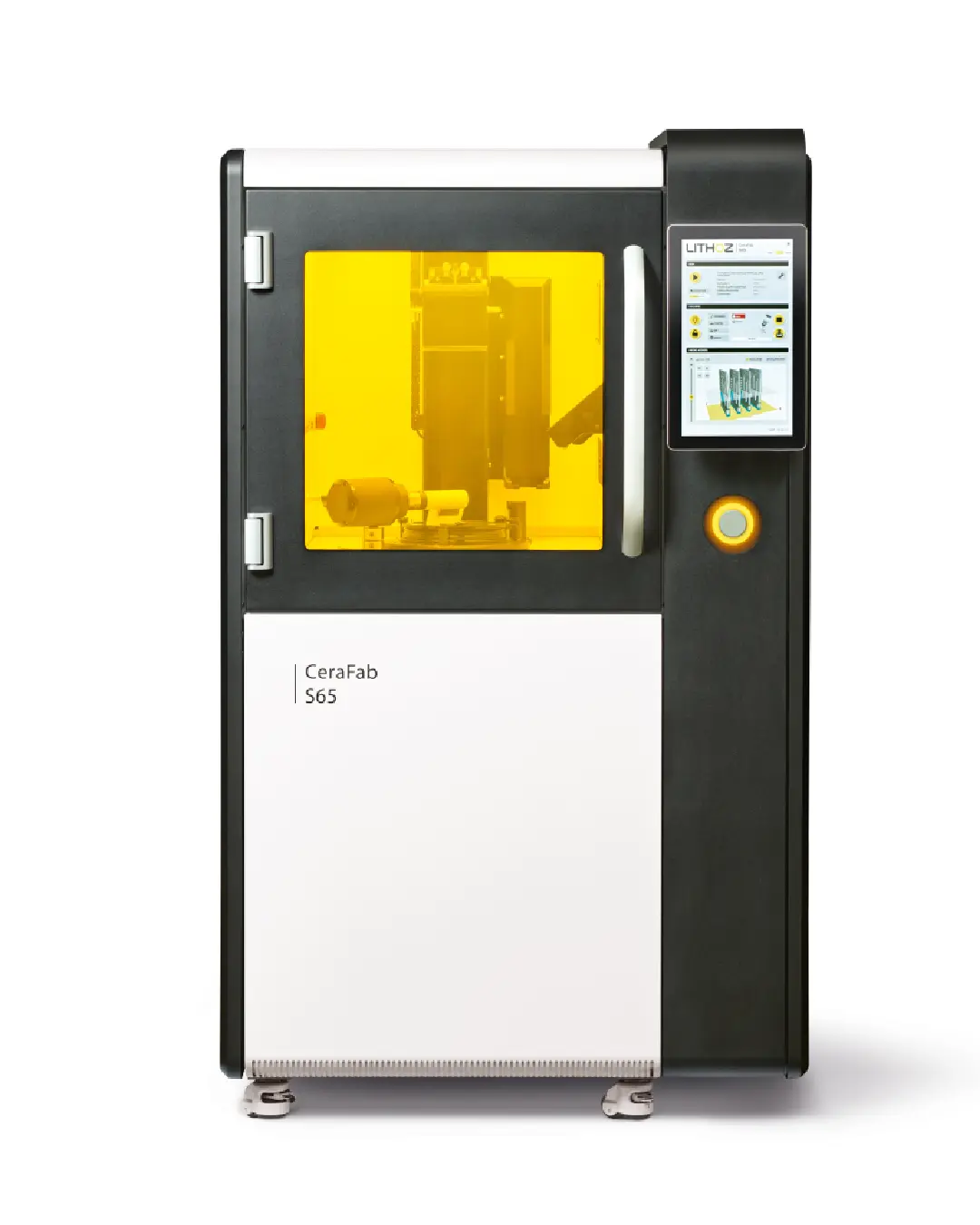



This large ceramic laval nozzle with inner cooling channels was produced for the aerospace industry using LCM technology.
Height: 189mm | Diameter: 84mm | Material: LithaLox 350



Lithium disilicate is widely used for manufacturing crowns and veneers where aesthetics are particularly important. With 3D printing constantly evolving, it is now possible via additive manufacturing to produce ceramic restorations with equal mechanical properties as pressed and milled lithium disilicate parts and which exhibit excellent clinical performance and marginal fits!Height: 189mm | Diameter: 84mm | Material: LithaLox 350



Lithium disilicate is widely used for manufacturing crowns and veneers where aesthetics are particularly important. With 3D printing constantly evolving, it is now possible via additive manufacturing to produce ceramic restorations with equal mechanical properties as pressed and milled lithium disilicate parts and which exhibit excellent clinical performance and marginal fits!Height: 189mm | Diameter: 84mm | Material: LithaLox 350



In a recent study, replacement bone implants were produced using 3D printing technology and hydroxyapatite, with a micro-CT scan of polymer foam being used to reproduce the inner structure of a bone as best as possible. Upon testing the specimens, these parts were shown to be equal to natural bone in terms of properties, without needing to take bone from other sources!








The key to any presence in space being sustainable is the ability to manufacture the necessary tools and machinery parts in situ and on-demand. By using LCM technology it is possible to produce parts from lunar regolith (moon dust simulant) with intricate shapes and highly precise dimensions. Read the whole study.



The key to any presence in space being sustainable is the ability to manufacture the necessary tools and machinery parts in situ and on-demand. By using LCM technology it is possible to produce parts from lunar regolith (moon dust simulant) with intricate shapes and highly precise dimensions. Read the whole study.



The key to any presence in space being sustainable is the ability to manufacture the necessary tools and machinery parts in situ and on-demand. By using LCM technology it is possible to produce parts from lunar regolith (moon dust simulant) with intricate shapes and highly precise dimensions. Read the whole study.






















With the CeraFab System and specific materials such as LithaCore 450, the most recent casting core designs are produced while reducing lead-times and costs. Including those with complex branching structures and multiple layers of walls.



An exceptional combination of biocompatibility, antibacterial and high-mechanical performances. With 3D printing there are no limitations to where the milling burst can get into. 3D printing patient-specific dental implants and inner threads in large number and in a highly reproducible manner is now possible with the CeraFab 7500 Dental











